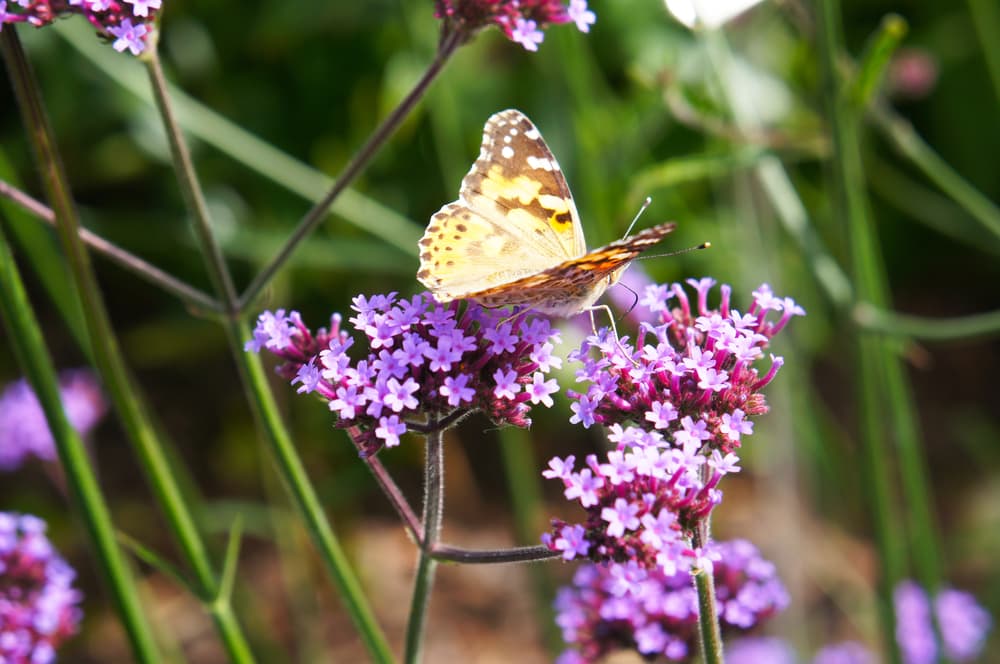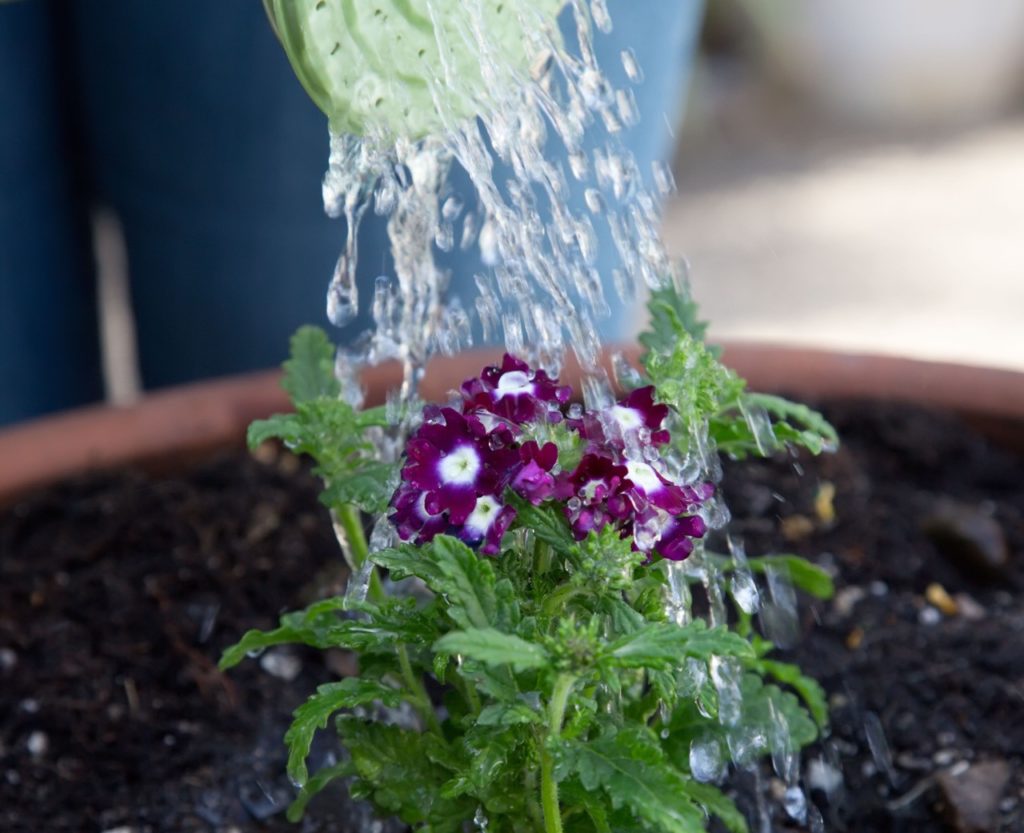Both Tender And Hardy Verbena Can Be Grown In Containers – Here’s How To Care For Them

PERENNIALS > VERBENA > CONTAINERS

Elizabeth is a Permaculture Garden Designer, Sustainability Consultant and Professional Writer, working as an advocate for positive change. She graduated from the University of St. Andrews with an MA in English and Philosophy and obtained a Diploma in Applied Permaculture Design from the Permaculture Association.
Reviewed By COLIN SKELLY

Colin is a Horticulturist and Horticultural Consultant with experience in a range of practical and managerial roles across heritage, commercial and public horticulture. He holds the Royal Horticultural Society’s Master of Horticulture award and has a particular interest in horticultural ecology and naturalistic planting for habitat and climate resilience.
IN THIS GUIDE
VERBENA GUIDES
Companion Planting
Container Growing
Deadheading
Overwintering
Propagation
Pruning
Varieties
Verbena Bonariensis
Whether we are talking about more tender bedding verbenas or hardier perennial types, these plants are wonderful choices for a wildlife-friendly garden.
If you are considering growing these lovely plants in your garden, you might be wondering whether you can grow verbenas in pots.
Read on for an answer to this question and for more information to guide you when growing verbena.
Can You Grow Verbena In Pots?
Verbenas can be grown relatively easily in containers.
In fact, container growing is an extremely popular choice when it comes to these plants, especially for bedding verbenas that are commonly grown as annuals in UK gardens.

Even hardier perennial verbenas can be grown in containers as long as they are given appropriate growing conditions and the right care.
When thinking about long-term container growing, which type and cultivar of verbena you choose will be important.
So, choose a verbena before you make any other decisions to make sure your chosen plant remains as happy and healthy as possible.
Choosing Verbena Containers
When choosing a container for verbena, it is important to take into account the size to which the particular verbena you have chosen will eventually grow.
Bedding types are generally smaller and can be ideally suited to growing in a wide range of containers, but these can also vary in height and spread quite dramatically.
Hardier perennial types may be more vigorous and need a much larger container.
If growing perennial types like Verbena bonariensis, look for compact cultivars if you plan to grow them in pots, such as ‘Lollipop’.

A container for verbenas can be one which sits on the ground, a hanging basket or another hanging container.
Just make sure, whatever type of container you choose, that it will retain sufficient moisture while allowing excess water to drain away freely.
Generally speaking, the larger the container, the less slowly it will dry out and the less work it will take to maintain it.
Many verbenas lend themselves well to planting in larger containers alongside other plants which enjoy similar conditions, either for summer bedding displays or for perennial plantings which will grow a number of years.
Verbena-Friendly Compost
If you are growing bedding verbenas as part of a summer bedding display in containers, you should fill your container with a peat-free multipurpose potting mix or a homemade equivalent.

With perennial displays, it is a good idea to fill containers with a loam or soil-based potting mix or homemade equivalent.
Potting Up Verbena
Bedding verbenas should be planted out into containers from mid-May onwards since these more tender types won’t survive a late frost.
If you pot them up sooner, keep them indoors or undercover in a frost-free location before hardening them off and moving them outdoors once all risk of frost has passed and the weather has warmed up in your area.

If you are planting these types of verbena in hanging baskets, you can use a frost-free greenhouse to get them off to the best possible start.
“There are many excellent Verbena cultivars for bedding,” says Horticultural Consultant Colin Skelly.
“Typically these are smaller than the hardy perennial species and cultivars and more suitable for pots, containers and hanging baskets. They are also more tender, so should be grown as an annual outdoors in the UK.”
Place plug plants into the basket in March or April in the greenhouse, so they get a chance to settle in and should begin flowering soon after they are moved and hung outdoors in May or June.
How Many Should You Plant Per Pot?
Verbenas vary significantly in their size and growing habits, so how many you can place in a given container will very much depend on which type and variety you are growing.

Smaller verbenas can look good on their own in smaller pots, but will often take less work if planted in groups, or alongside other plants which like similar sunny and free-draining growing conditions.
Potted Verbena Care
Place pots in a sunny spot.
Taller growing types will do best in a spot that is sheltered too.
Water verbenas regularly and remember that those growing in pots will require more frequent watering than those growing in the ground.
Water when the medium feels dry at a depth of around 2.5cm, ensuring that excess water can drain away freely, as verbena cannot tolerate waterlogged conditions.
When you water, continue to add water until the majority of the compost is wet, but stop before it runs out of the drainage holes.

Verbenas planted in the ground in your garden won’t typically need fertilising, other than an organic mulch applied annually in spring.
If you want, you can apply a potassium-rich organic fertiliser every couple of weeks or from around a month after planting until the end of the flowering period.
In winter, it is generally best to move perennial Verbena into a greenhouse, porch or another sheltered spot to see them through until spring.
Cut back perennial verbena in the spring, just before new growth emerges.
